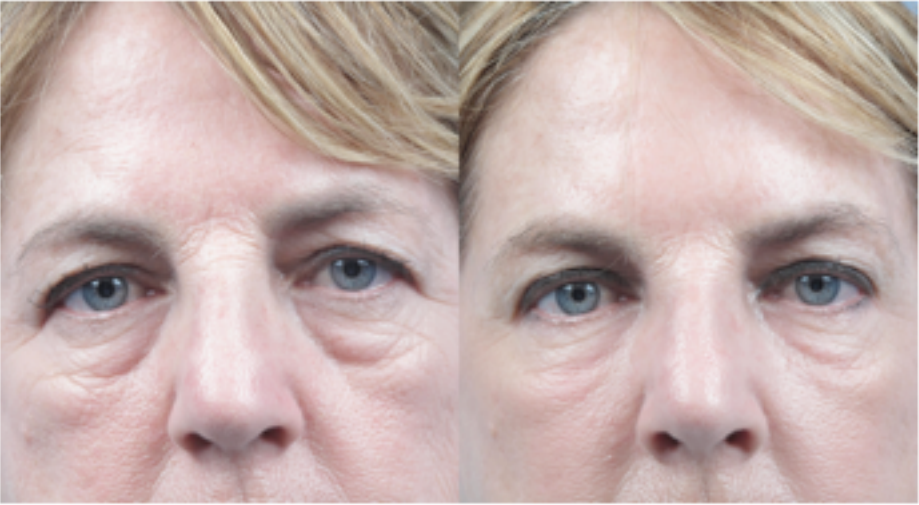Do you have sagging skin or extra fat on your neck, cheeks, or jawline? FaceTite is a male and female skin tightening and fat reduction surgery that targets drooping skin, wrinkles, and other indications of ageing. FaceTite might be a suitable option for you if you want to lift and contour with a less invasive procedure. FaceTite can repair, firm, contour, and smooth facial features for a more toned or youthful appearance. In this post we will discuss more about FaceTite procedure and FaceTite before and after details.
What Is FaceTite Procedure?
FaceTite is a cosmetic surgery that primarily targets the lower half of your face to treat drooping skin and wrinkles. As part of the treatment Radiofrequency waves and liposuction are used, which only requires a few minor incisions(1). One alternative to a conventional facelift is a FaceTite surgery.
With often only one treatment required, the FaceTite procedure dramatically improves skin laxity and drooping on the face and neck.


But Why FaceTite?
The first thing people notice about us is our face, and it leaves a lasting impact on those we engage with. Even with a balanced diet and regular exercise, the impacts of ageing, heredity, smoking, and sun exposure can develop undesirable creases, wrinkles, and sagging skin, giving the impression of ageing and exhaustion. Even while skin care and minimally invasive treatments like Botox® and dermal fillers can offer some localised, transient relief, patients with more severe signs of ageing frequently seek for a face/neck lift. Many patients are hesitant to undergo such an invasive operation, and they previously had few choices. And, thanks to FaceTite techniques, not everyone need a facelift to get surgical-like outcomes.
FaceTite is a game-changing revolutionary technique that achieves near-surgical outcomes with extremely small incisions and minimum downtime.
How Much Does FaceTite Cost?
FaceTite procedures range in price from $2,500 to $8,500. FaceTite costs vary depending on location, board certified plastic surgeon, and length and complexity of the plastic surgery. As it is a cosmetic procedure, most insurance providers do not cover FaceTite procedure. It is better to check with your insurance provider before getting yourself FaceTite.
How Is FaceTite Performed?
In the FaceTite procedure, conventional liposuction is combined with radiofrequency waves.
To begin, your practitioner will numb the treatment area and create a tiny incision. They will next install a tiny device with electrodes that will administer radiofrequency waves that will liquefy fat cells.
A second tube suctions out the now-liquified fat while radiofrequency waves are released. The radiofrequency element of the process has a dual purpose by stimulating collagen fibres beneath your skin.
With age, your skin naturally loses collagen, which can exacerbate the appearance of pores, age spots, and wrinkles. Restoring collagen may help your skin seem toned and smoother.
What Are The FaceTite Complications
Major complications as part of FaceTite procedure is rare. Some noted complications are redness, swelling, tenderness and infection.
However, one of the rate FaceTite complications are deformed lips while smiling.
FaceTite vs Ultherapy
Ultherapy is a non-invasive cosmetic technique that is said to promote collagen and tighten your skin. In contrast to FaceTite, no incisions are performed. Ultherapy, on the other hand, employs ultrasonic energy delivered through a tiny device placed on your face or neck.
You will need to repeat Ultherapy procedures when the effects fade off. This process, like FaceTite, requires no downtime.
Also Read: How To Get Rid Of Forehead Acne?
FaceTite vs FaceLift
If you don’t want to have significant surgery, both FaceTite and Ultherapy are viable alternatives to a classic facelift. However, specialists argue that only a facelift can ensure spectacular, long-term benefits.
Your physician will manipulate your skin and muscles by tugging tissues upwards during a facelift. This technique is more suited for severe sagging and deep creases.
A facelift necessitates additional incisions, which increases the risk of complications like as discomfort, blood, and infection. There is also the possibility of side effects from general anaesthesia.
How to Extend the Life of Your FaceTite Results
- Excessive sun exposure damages the skin and accelerates ageing. When going outside, apply a high-SPF sunscreen and a hat to protect your face and neck.
- Avoid vigorous activities: do not go to the gym right after therapy. This is due to excessive exercise creating increased circulation in the face, resulting in edoema and other uncomfortable side effects.
- Excessive perspiration is also caused by vigorous activity, which may increase side effects and affect your FaceTite findings.
- Keep your skin clean by washing it with lukewarm water and a light cleanser on a regular basis. Do not exfoliate or scrape your skin soon after the operation.
- Avoid smoking: Smoking and tobacco usage are not only bad for your health in the long run, but they also generate deep wrinkles and creases in your skin.
- Avoid wrinkling your brow: excessive expressions and dynamic facial movements, such as frowning, can cause or worsen face wrinkles.
- Select a seasoned professional: Even though FaceTite is a nonsurgical procedure, individuals may have difficulties as a result of their therapy. This is why it is critical to select a clinic with reputable professionals.
Takeaway
A more recent, minimally invasive procedure called FaceTite combines radiofrequency radiation with liposuction. If you want to avoid a full facelift but have mild to moderate indications of aging, you might be a candidate.
Consult a skilled, board-certified medical professional about your cosmetic worries. They could suggest additional options in addition to FaceTite to assist you achieve your goals.
References
https://www.liebertpub.com/doi/abs/10.1001/jamafacial.2018.0917?journalCode=jamafacia






